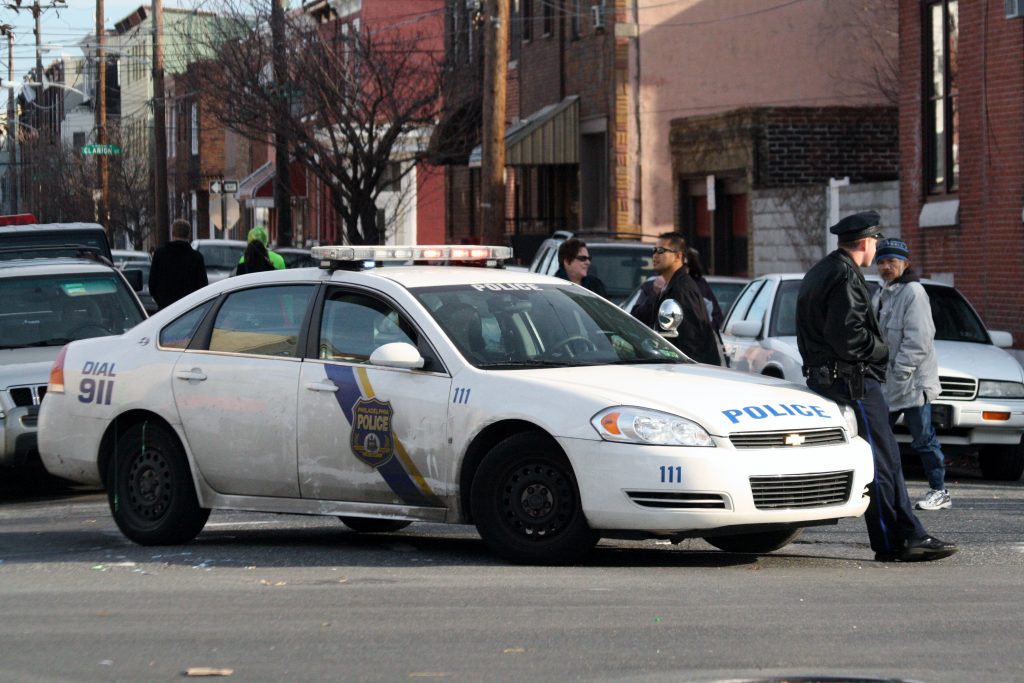
Image Credit: chrisinphilly5448, CC0, via Wikimedia Commons
By Saul Roth
Police officers are six times more likely to suffer from PTSD than the general public (Green, 2004). Thirteen percent of suburban police officers are found to be suffering from PTSD at any given time. In contrast, the general public has a PTSD rate of 3 percent. The rate of PTSD goes up for officers with seniority and depending on the events they encountered from the previous month. Police officers and civilians can suffer PTSD from similar incidents, such as car accidents. However, police officers also get PTSD from car chases and assaults on themselves. Both the general public and police officers have similar symptoms, though. Police officers, however, are more likely to use alcohol if they are suffering from PTSD symptoms. They drink alcohol to either suppress or forget the traumatic incident. Since police officers and civilians often encounter their PTSD differently, their coping mechanisms are likely to be different. Police officers cannot avoid going on assignments where they might encounter the same traumatic incident. The recovery time will be longer for police officers than the general population (Green, 2004).
Green (2004) notes that 13 percent of suburban police officers suffer from PTSD. Taking into account all police officers in U.S., the rate of PTSD can be as high as 35 percent. PTSD will usually begin with one traumatic incident. Then, exposure to subsequent incidents will increase the symptoms of the PTSD. Coping mechanisms will worsen for some police officers, as they are often not afforded the chance to resolve the issue that caused the trauma. There is also the chance that a police officer can develop PTSD from a civilian experience and then have symptoms exacerbate with police service. An officer can also experience a traumatic incident off duty and then aggravate it with his police service (Stephens & Miller, 1998).
Stephens and Miller (1998) studied police officers in New Zealand and determined what type of incidents caused them the most traumatic stress: Bad homicide scenes, serious car accidents, death of a family member or friend, and the death of a fellow police officer were top on the list. Other traumatic incidents include threat to their lives, undercover work, large crowds in a riot situation, suicides (especially gruesome types with a shotgun), child deaths, and hostage situations. Some officers disclosed their worst event, while others could not report one at all. Those officers who did not report a horrible event had lower scores on measures assessing for PTSD. The problem for the officers that did report a horrible event was that subsequent events increased the PTSD. Because of this stepping stone effect, it is harder to treat the PTSD because there is no specific incident to treat (Stephens & Miller, 1998)
A major symptom of PTSD is dissociation. A coping mechanism unbeknownst to the officer himself or herself, he or she might daydream and live life differently as before the event. He or she might act differently in relationships at home or at work. The original incident that causes the PTSD becomes a fixed idea in the officer’s mind and will usually become an unconscious memory to the officer. This mechanism occurs both in wakefulness and when in the trauma survivor’s sleeping, recurring in the form of nightmares (Carlier, Lamberts, Fouwels, Gersons, & Berthhold, 1996). A study by Carlier, et.al. (1996) on PTSD and dissociation found that half of the officers in their sample who suffered from PTSD also experienced dissociation. This shows that many officers experiencing PTSD might be working in a dangerous state of mind. The officers also depersonalized and used derealization to help them handle the work environment. Whatever state of mind the PTSD and dissociation has evolved into, it should be treated (Carlier et al., 1996)

Recent Comments